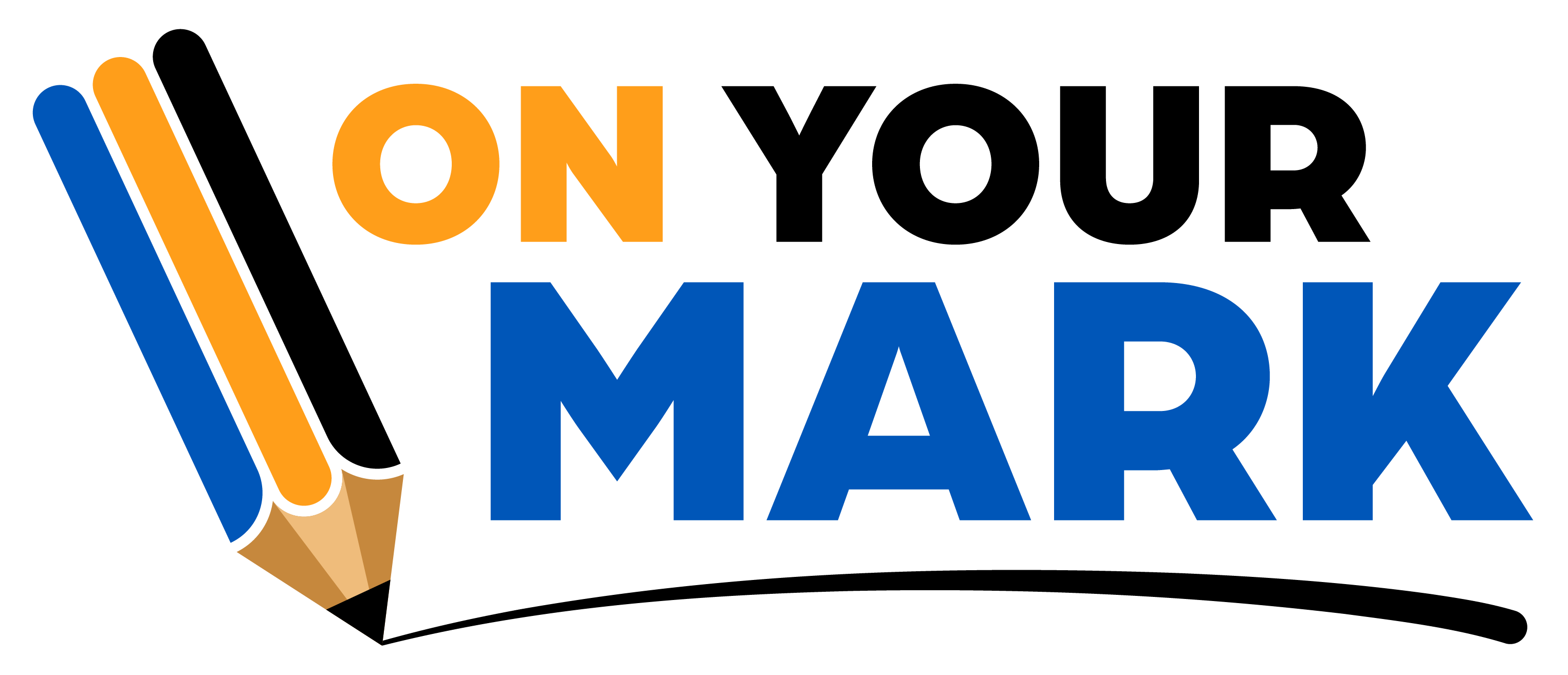Strong Literacy Skills Unlock Achievement in Every Subject: Here's Why
We can predict a child's academic and personal success based on one key characteristic.
Yep, just one.
What is it?
That particular student's ability to read fluently by the 3rd grade.
According to research, a staggering one in six children who are not reading proficiently in 3rd grade do not graduate from high school on time, a rate four times greater than that for proficient readers.
Most educators have known—and been vocal—about these high stakes for a long time. We know that children need to build strong foundational literacy skills between kindergarten and 3rd grade. But why? Why are the stakes so high? What happens as students move into upper-elementary and secondary school that requires such a strong foundation in reading's basic skills?
The stakes are high because foundational literacy skills build upon each other. In other words, without them, students will (at best) struggle with high-level content comprehension.
These critical skills—reading, writing, and spelling—are a bridge to success in almost every academic task a child will experience in school and beyond. Remember that one characteristic mentioned earlier? Studies prove that a student’s early proficiency in these literacy skills can predict success later in a person’s life: in college, in employment, and even in their personal relationships.
Literacy Across the Curriculum: Why it Matters
The Reading Rope and the Science of Reading
Scarborough’s Reading Rope demonstrates how different threads of language acquisition and literacy instruction need to come together for a child to become a proficient reader. The ultimate goal of reading—i.e., comprehension—develops when a student can engage in several complex processes at once. Those processes include early childhood literacy skills, like phonological awareness, letter recognition, and vocabulary. And those skills are essential here.
This blog post published by Amplify breaks down the connection between the Reading Rope and the Science of Reading:
The Reading Rope emphasizes the need for a comprehensive, deliberate approach to reading instruction. It recognizes that reading is not a singular skill, but rather a set of interwoven processes.
By understanding and addressing each of these processes (known in the Rope as strands), educators can provide the targeted instruction that helps readers succeed.
“Reading comprehension is the product, not the sum, of those two components. If one of them is zero, then overall reading ability is going to be zero,” says Jane Oakhill, Ph.D., professor of experimental psychology at the University of Sussex.
Source: Wegenhart, Todd. (2015). Better Reading Through Science: Using Research-Based Models to Help Students Read Latin Better. Journal of Classics Teaching. 16. 8-13. 10.1017/S2058631015000021. Click the image to access the full text.
Beyond Early Literacy
Starting in 3rd grade, students will see more abstract and content-specific words in academic texts. Thankfully, many of these words (often with roots in Greek and Latin) are phonetically regular, which means decoding them is fairly easy once students have mastered early foundational reading skills.
As students advance to 4th grade and beyond, the number of new multisyllabic words they'll need to read, understand, and apply skyrockets. In 1995, Professor David L. Share famously called this the "orthographic avalanche," noting that students will likely encounter roughly 10,000 new words in 5th grade, jumping to 70,000 new words by 7th grade.
The sheer volume of new words makes it impossible for teachers to provide explicit instruction for each one and still teach highly complex content. That means that without mastery of foundational language and word recognition skills, students won't become skilled readers who can comprehend what they are reading. As a result, they fall further and further behind academically and miss out on the opportunities that come from academic success.
That's why Science of Reading-based instruction is so important.
Fully Engaged: The Impact of Cross-Curricular Literacy Instruction
Clearly, literacy skills impact learning across all subjects. Research shows that proficient readers are better equipped to tackle higher-level academic tasks, like complex math problems, scientific data analysis, and historical interpretations. This is not just because they can decode and comprehend the words (although of course, this is necessary), but because they're actively working on building the vocabulary and background knowledge necessary for deep comprehension.
In every subject area, students need the literacy skills they've developed early on to acquire new knowledge.
 In math, proficient readers are better equipped to solve word problems because they can visualize scenarios, identify relevant information, and understand the relationships between numbers and operations. Studies prove that students with strong reading comprehension perform better on mathematical reasoning tasks compared to peers with similar math skills but lower reading abilities.
In math, proficient readers are better equipped to solve word problems because they can visualize scenarios, identify relevant information, and understand the relationships between numbers and operations. Studies prove that students with strong reading comprehension perform better on mathematical reasoning tasks compared to peers with similar math skills but lower reading abilities.
 Or, consider the word photosynthesis in a middle school science class. Students with strong decoding skills can quickly break down this multisyllabic word into manageable chunks, like photo and synthesis, to try to create meaning from the word. But true comprehension requires more than just pronunciation—it relies on robust vocabulary knowledge and the ability to connect and anchor new concepts with existing knowledge.
Or, consider the word photosynthesis in a middle school science class. Students with strong decoding skills can quickly break down this multisyllabic word into manageable chunks, like photo and synthesis, to try to create meaning from the word. But true comprehension requires more than just pronunciation—it relies on robust vocabulary knowledge and the ability to connect and anchor new concepts with existing knowledge.
 Social studies texts often contain complex cause-and-effect relationships, requiring students to track multiple historical events and their interconnections. Strong readers naturally use strategies like summarizing, questioning, and making inferences—skills that transfer well across subject areas.
Social studies texts often contain complex cause-and-effect relationships, requiring students to track multiple historical events and their interconnections. Strong readers naturally use strategies like summarizing, questioning, and making inferences—skills that transfer well across subject areas.
Strategies for Cross-Curricular Literacy Instruction
Reading proficiency fuels success across all subjects. It's time to embrace a powerful truth: Every teacher, regardless of discipline, plays a vital role in developing strong readers.
Here, we've listed proven strategies for embedding literacy instruction across the curriculum:
- Pre-teach or front-load unit or lesson vocabulary: Before diving into new content, introduce key terms and how they relate to other similar words outside of that context. For example, a math teacher might explore the relationship between "denominator" and "democracy," highlighting the similarities: how both relate to parts of a whole.
- One educator on our team always started her direct instruction with a "vocab to know" segment. She started by listing the terms, either on the board or on class notes, and then defined the words outright or had students recall their meanings.
- Annotation or marking up the text: Teach students to actively engage with texts through purposeful marking, underlining, questioning, and summarizing. This works equally well for readings in social studies and science, like interpreting primary historical documents and breaking down scientific procedures.
- Do you have students who highlight everything? Here's a tip: Any time students are marking up text, always give them a "purpose for reading." For example, "Today, you're reading page 54. While you read, look for reasons that the Texas settlers were upset with Santa Anna." Have students write "purpose for reading = ___" on the top of the page or a sticky note so that they won't forget! Telling your students what to look for guides their focus and removes superfluous annotation.
- Writing to learn: Incorporate short writing tasks that help students process new information into your lessons. Quick writes, summary paragraphs, or concept maps can be powerful tools in any subject area. The pencil-to-paper connection is an effective way to help map information in the brain. For instance, while it can seem out of place, keeping a journal in math helps students process the way math skills connect and build on one another as the year progresses. Or, have students write down the steps they took to solve a math problem on an exit ticket.
How OnYourMark Can Help
 OnYourMark’s high-impact, Science of Reading-based virtual tutoring program can help support student learning in all subject areas.
OnYourMark’s high-impact, Science of Reading-based virtual tutoring program can help support student learning in all subject areas.
Tutors work with students to:
- Build automatic word recognition skills through systematic phonics instruction
- Develop a robust academic vocabulary through explicit teaching of word parts and meanings
- Strengthen comprehension strategies that transfer across subject areas
- Foster confidence through consistent, supportive practice
…all while building relationships that foster a love of reading.
By focusing on foundational literacy skills, we help create a domino effect of success across all academic areas.
“When these kids are getting these interventions they're better able to engage, they have more confidence, they're answering questions... They're excited about the content. Those are some of the things that we've seen teachers say about the kids who are supported by OnYourMark.”
—Dana Talley, Former Chief Academic Officer, Lincoln Parish Schools, Ruston, Louisiana
Conclusion
Reading skills are not just about reading—they're about helping students reach their full potential in school and life. With targeted support to strengthen their reading comprehension skills, students are more likely to achieve academic success. And those successes lead to more opportunities and greater fulfillment as students grow into adults.
Want to learn more about high-impact tutoring? Download our eBook, Immediate Impact, Lasting Results: The Ultimate High-Impact Tutoring Guide.
Or, speak with a member of our team today.
Works Cited and Links to Resources
(Expand to see all)
- Regional Educational Laboratory Program, Midwest. “What Does the Research Say about the Relationship between Reading Proficiency by the End of Third Grade and Academic Achievement, College Retention, College and Career Readiness, Incarceration, and High School Dropout?” Ies.ed.gov, Institute of Education Sciences, 1 July 2018, ies.ed.gov/ncee/rel/Products/Region/midwest/Ask-A-REL/10268.
- Amplify Staff. “The Reading Rope: Breaking It All Down .” Amplify, 29 June 2023, amplify.com/blog/science-of-reading/the-reading-rope-breaking-it-all-down/.
- Callahan, Maria Deborah. “Orthographic Learning through Self-Teaching: Effects of Decoding Accuracy, Decoding Speed, Word Length, Morphology, and Individual Differences.” Escholarship.org, 2017, escholarship.org/uc/item/3qj2g3qg.
- Hernandez, Donald J. “Double Jeopardy: How Third-Grade Reading Skills and Poverty Influence High School Graduation.” ERIC, Annie E. Casey Foundation, 2011, eric.ed.gov/?id=ED518818.
- Shanahan, Timothy. “Can Reading Instruction Improve Math Learning in the Primary Grades? | Shanahan on Literacy.” Www.shanahanonliteracy.com, 16 July 2022, www.shanahanonliteracy.com/blog/can-reading-instruction-improve-math-learning-in-the-primary-grades.
- Share, David L. “Phonological Recoding and Self-Teaching: Sine qua Non of Reading Acquisition.” Cognition, vol. 55, no. 2, May 1995, pp. 151–218, https://doi.org/10.1016/0010-0277(94)00645-2.
Meet With Our Team
Related Posts

The ROI of High-Impact Tutoring: A District Leader's Guide to Lasting Early Literacy Gains



